#underfloor heating panels
Explore tagged Tumblr posts
Link
Large Format Automatic Thermoforming Machines: High-Speed Production | RIDAT
Ridat's ATF series of Large Format Thermoforming machines can produce a range of thermoformed components at high speeds such as chocolate box inserts, biscuit trays, roofing panels, etc.
#thermoforming machine#large format thermoforming machine#automatic thermoforming machine#high-speed thermoforming machine#Ridat thermoforming machine#thermoforming equipment#thermoformed components#chocolate box inserts#biscuit trays#underfloor heating panels#roofing panels#automotive door protection covers#packaging machinery#food packaging#candy packaging#bakery packaging#food trays#food blisters#automotive manufacturing#automotive parts
0 notes
Photo
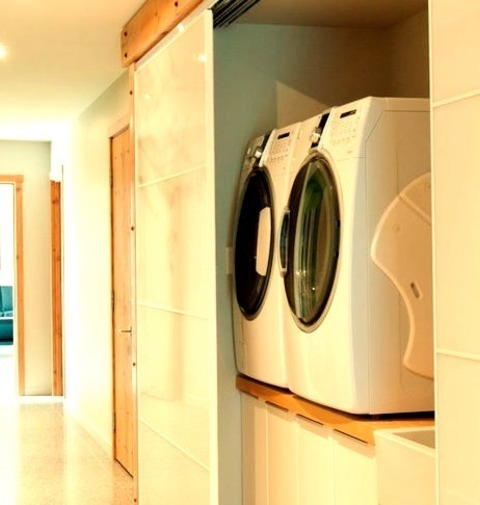
Laundry in Vancouver Inspiration for a large contemporary concrete floor laundry closet remodel with gray walls
0 notes
Text

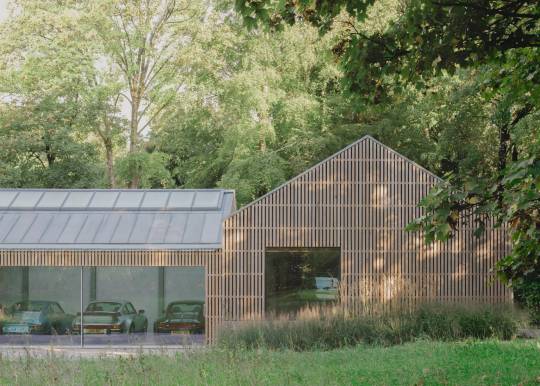


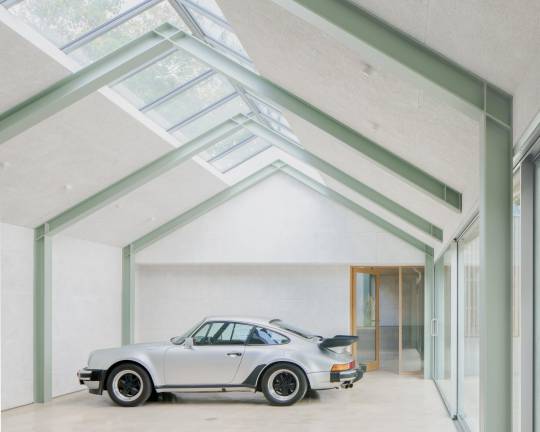

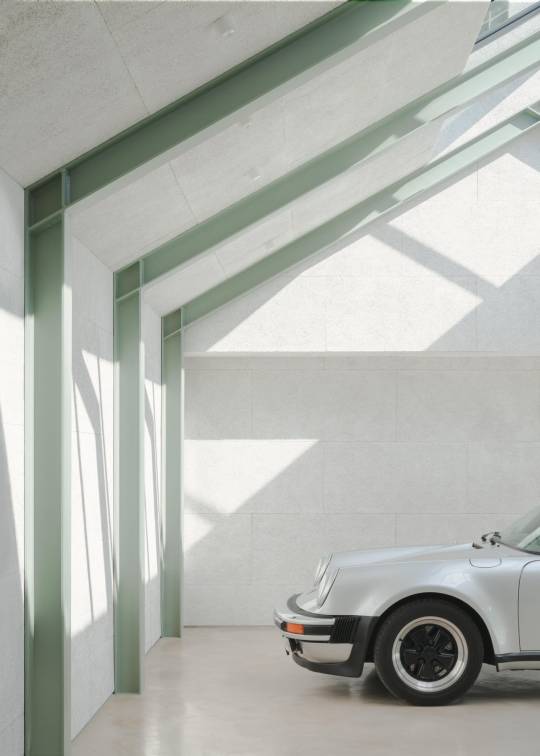
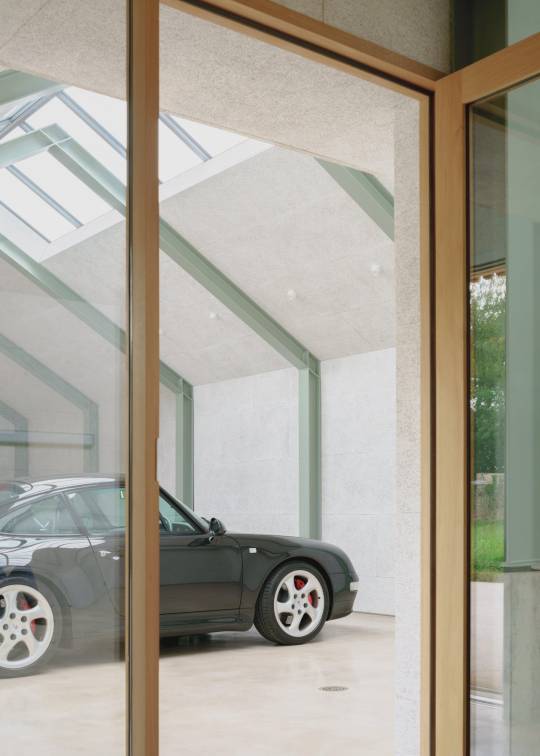
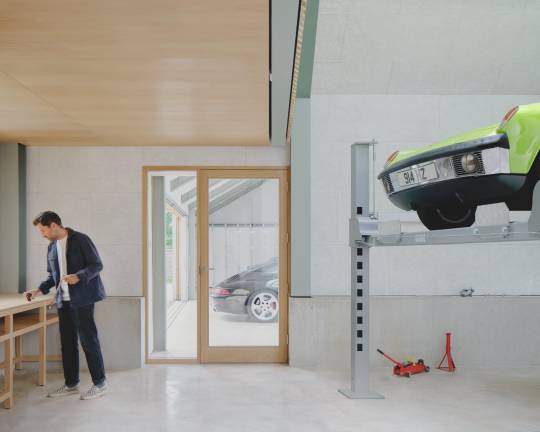

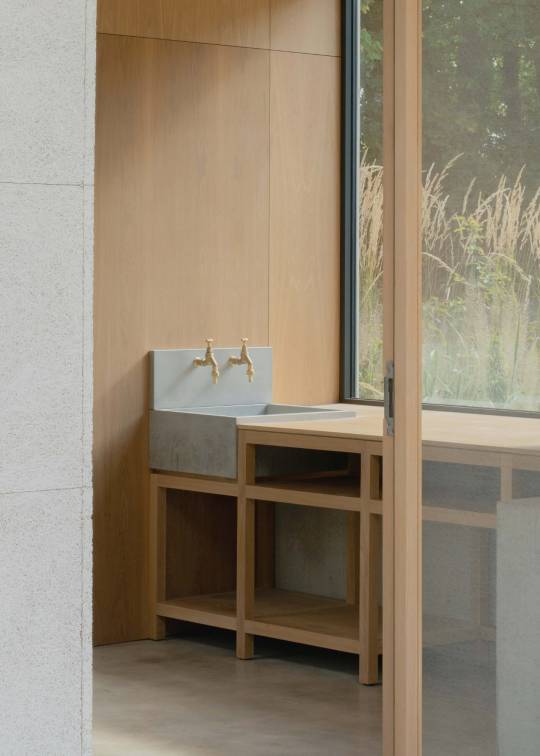

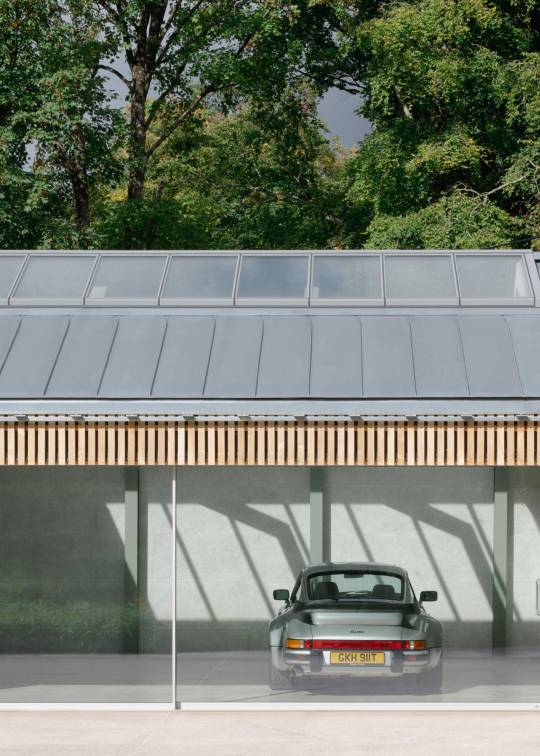
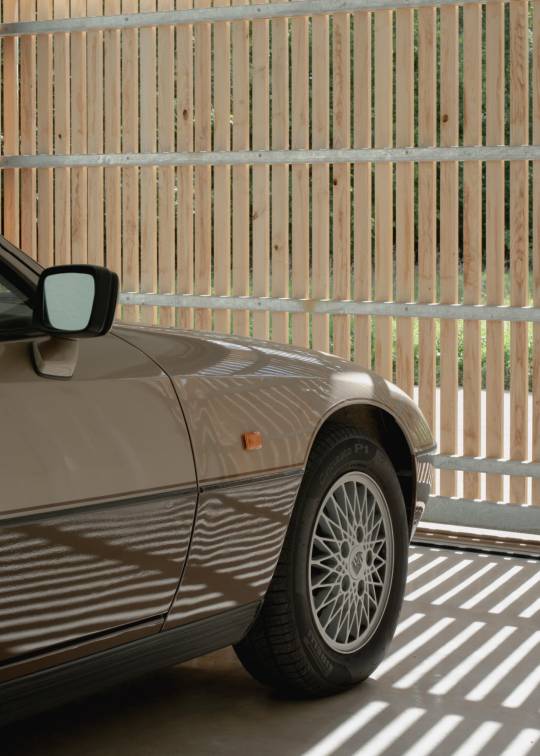


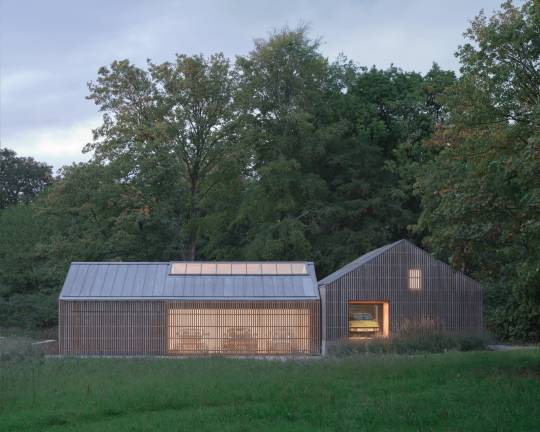
Autobarn by Bindloss Dawes
The Autobarn is the realisation of our client's long-term dream to house his collection of classic German cars. The project is composed of two volumes: a clean, five-bay garage for everyday use and a taller workshop for repairs and future restoration projects.
Beyond satisfying this initial use, the project ambition was to create a flexible, 'long-life, loose-fit' building that could be used for a range of different uses. Currently it doubles up as event space, however the ambition is that the Autobarn could one day become a low-energy house.
Located on the outskirts of a small Somerset village, the project is set within the grounds of an eighteenth-century Grade 2 listed house. It replaces several haphazard outbuildings and consolidates their amenity into an elegant architectural proposal, nestled within a glade of mature trees.
The project's design references the language of neighbouring agricultural barns. As a practice we are interested in reassessing the rural vernacular, both for its contextual appropriateness and its lessons in low-cost, pragmatic design. As such, the Autobarn re-interprets simple forms and methods of construction, adapting more temporary, rudimentary methods into a robust and elegant paradigm for low-cost, rural architecture. Composed of a concrete base and steel framed structure, intermittent timber cladding and zinc metal roof, the Autobarn adapts barn typologies with varying levels of refinement. Consideration was also given to its weathering, with the natural zinc roof dulling to complement the silver patination of the sweet chestnut cladding.
Like many barns, permeability to light and air is controlled through a series of movable layers. First experienced as a closed solid mass, the barn walls open up via a number of doors, including an heroic 7m sliding timber screen. The intermittent timber slats of the screens create internal dappled light during the day, which is reversed at night as interior lighting illuminates the surrounding landscape. Internally the steel structure is expressed in an array of simple portal frames, with sustainably-sourced wood-fibre acoustic board forming internal wall and ceiling. The garage space is calm and gallery-like, while the workshop space presents a tougher, taller workshop, surrounded with concrete wainscotting and designed to accommodate a car lift.
The building's 'long-life/loose-fit' ambitions have meant that the insulation and energy performance exceed residential standards. Although thermostats are currently turned down for its current use, the building includes underfloor heating powered by an Air Source Heat Pump, as well as additional first fix services hidden behind the internal wall paneling for future conversion.
Construction started in November 2020 and was completed at the end of 2021, with the project effected by the global pandemic and building material inflation. Despite these challenges, and the inclusion of some one-off expensive items (such as the electric garage doors), the Autobarn was built for under £2,300 / m2. In tandem with high energy performance and the use of natural materials, it combines our studio's goal to combine beauty, affordability, and sustainability.
Design: Bindloss Dawes Location: Frome, United Kingdom Area: 165 m² Year: 2022 Photography: Building Narratives
#architecture#gable roofs#garages#barns#british barns#british garages#united kingdom#bindloss dawes#building narratives#interiors
34 notes
·
View notes
Text



DP2 - Wandering Earth
Week 17:
This week, I developed a facade system that can be adapted to different spaces. The different degrees of curling of the panels respond to different directions of wind, rain and sun, resulting in the change in the interior ventilation, moisture content and light levels. I started working on the interior details of the laboratory including computer and seating units, structures supporting the existing facade that gets studies on, sprinkler and hail machine systems; and considered the primary and secondary structures supporting various components.
I need to keep working on the integrated design modules for the testing chamber, workshop space and garden for next week, and below are the details for different systems:
Roof: shape of the roof (e.g. jagged) and direction of its openings to allow light coming into the space. Rain water collecting systems with piping for flushing toilets
Floor: voids in the tiles for growing different species of plants; and delivering water collected by the facade system to the floor to nurture them. Angles of the the flooring systems and the different tiles on top to have different textures, and also how water is drained in the lab.
Facade: different scales, density and curvature of the panels adapted to different spaces considering different window openings. How it can affect the moisture content, heating and lighting levels inside. Double layered facade to have a void space for people to walk in, such as mediation room.
Lighting: having a combination of Industrial lights and spot lights in the lab, and task lights in the control room to make sure the latter space is darker for visibility
Heating and ventilation active systems: comparison of direct expansion system vs chiller, MVHR system vs air handling unit, considering air source heat pump and underfloor air con. Considering the position of the plant room.
I also need to simplify the plan by: having less stairs and more ramps, terraforming, organisation and shape of spaces to be clearer and more functionally efficient, using height labels for clearer communication.
Performative model: one 1:1 facade panel with functional solar and rain fuel technology. Considering bimetallic technology to make its curvature controllable by computer?
2 notes
·
View notes
Text
Why Air Source Heat Pump Cylinders Are the Backbone of Smart Heating

Introduction to Air Source Heat Pump Cylinders
Air source heat pump (ASHP) cylinders have revolutionized the way we approach modern heating systems. As we transition toward eco-friendly solutions, these cylinders stand at the forefront of energy-efficient and sustainable heating technologies. They not only reduce energy consumption but also provide a dependable and consistent heating solution for homes and businesses. In this article, we delve deep into the unparalleled benefits, working principles, and critical role of ASHP cylinders in smart heating systems.
What Are Air Source Heat Pump Cylinders?
Air source heat pump cylinders are specialized storage tanks designed to work seamlessly with heat pumps. They store and distribute hot water generated by extracting heat from the ambient air outside your property. By harnessing renewable energy, these cylinders provide an eco-conscious alternative to traditional heating systems reliant on fossil fuels.
Key Features of ASHP Cylinders:
High Efficiency: Designed to maximize energy transfer with minimal loss.
Durability: Built with high-grade materials to ensure longevity.
Integrated Technology: Advanced control systems for precise temperature regulation.
Compatibility: Can pair with underfloor heating, radiators, and solar panels.
The Science Behind Air Source Heat Pumps
Air source heat pumps operate on the principle of thermodynamics. They absorb heat from the outside air, even at low temperatures, and compress it to a higher temperature suitable for heating water or space.
Steps Involved in Heat Transfer:
Absorption: Heat is absorbed from the ambient air using a refrigerant.
Compression: The refrigerant is compressed, increasing its temperature.
Heat Exchange: The heat is transferred to the water stored in the cylinder.
Circulation: Hot water is distributed to the heating system or taps.
This process is efficient and sustainable, requiring only a fraction of the electricity compared to conventional systems.
Advantages of Air Source Heat Pump Cylinders
1. Energy Efficiency
One of the most significant benefits of ASHP cylinders is their ability to deliver up to three times more energy than they consume. This high coefficient of performance (COP) translates to substantial energy savings.
2. Environmentally Friendly
ASHP systems utilize renewable energy, significantly reducing carbon emissions. By adopting these cylinders, users contribute to global sustainability efforts.
3. Cost Savings
Though the initial installation cost may seem higher, the long-term savings in energy bills offset this investment. Government incentives further reduce the financial burden for homeowners.
4. Low Maintenance
With fewer moving parts than traditional systems, ASHP cylinders require minimal maintenance. Regular servicing ensures their efficiency and prolongs their lifespan.
5. Versatility
Whether it's for domestic hot water, space heating, or a combination of both, these cylinders adapt to various heating needs effortlessly.
Integration of ASHP Cylinders in Smart Heating Systems
Smart heating systems leverage cutting-edge technology to optimize energy usage. Air source heat pump cylinders seamlessly integrate into these systems, allowing homeowners to control and monitor their heating remotely.
Smart Features Include:
Programmable Schedules: Set heating schedules to match your daily routine.
Energy Monitoring: Track energy consumption and savings in real-time.
Remote Control: Adjust settings via smartphone apps or voice assistants.
System Diagnostics: Receive alerts and updates on system performance.
This intelligent integration enhances user convenience and further reduces energy waste.
Comparison With Traditional Heating Systems
When compared to gas boilers or electric heaters, ASHP cylinders offer superior performance and efficiency. Below is a quick comparison:
Feature
Air Source Heat Pump Cylinders
Gas Boilers
Electric Heaters
Energy Efficiency
High
Moderate
Low
Environmental Impact
Low Carbon Emissions
High Carbon Emissions
High Carbon Emissions
Running Costs
Low
Moderate
High
Maintenance
Minimal
Regular
Minimal
The clear advantages of ASHP cylinders make them an ideal choice for modern heating needs.
Choosing the Right Air Source Heat Pump Cylinder
Selecting the right cylinder depends on several factors, including the size of your property, hot water demand, and existing heating infrastructure.
Key Considerations:
Capacity: Ensure the cylinder can meet your household's hot water needs.
Insulation: Opt for models with superior insulation to prevent heat loss.
Controls: Advanced control features enhance usability and efficiency.
Certification: Look for products with recognized energy efficiency certifications.
Consulting a professional installer ensures that the chosen system meets both your current and future heating requirements.
Future of Air Source Heat Pump Cylinders
The future of heating lies in sustainable and smart technologies. Advances in ASHP cylinders, such as improved thermal storage and integration with renewable energy sources like solar panels, are paving the way for a greener tomorrow. As governments worldwide prioritize carbon neutrality, air source heat pump cylinders will undoubtedly play a pivotal role.
Conclusion
Air source heat pump cylinders are more than just heating solutions—they are the backbone of smart, energy-efficient homes. With their ability to reduce carbon footprints, lower energy costs, and integrate seamlessly with modern technology, they represent the future of heating systems. Investing in ASHP cylinders today ensures a sustainable and comfortable living environment for years to come.
0 notes
Text
The Art of Luxury: Inspiring Bathroom Makeover Ideas for Melbourne Homes

A luxurious bathroom isn’t just about aesthetics—it’s about creating a sanctuary of relaxation, sophistication, and functionality. For homeowners in Melbourne, where design trends evolve rapidly, a bathroom makeover offers the perfect opportunity to blend contemporary elegance with comfort. Whether you’re looking to transform your existing space or embark on a full renovation, here are some inspiring ideas to elevate your bathroom into a luxurious retreat.
1. Embrace Timeless Elegance with High-End Materials
Luxury bathrooms are defined by the quality of materials used. Opt for premium materials such as marble, travertine, or porcelain tiles to create a refined and polished look. Natural stone surfaces, particularly in shades of white and grey, exude opulence and provide a timeless appeal. For flooring, heated tiles add a touch of comfort and extravagance, especially during Melbourne’s chilly winters.
2. Statement Bathtubs for Ultimate Relaxation
A freestanding bathtub serves as the focal point of any luxury bathroom. Consider a sculptural stone or cast-iron tub to bring a spa-like atmosphere into your home. Japanese soaking tubs and clawfoot bathtubs are also excellent choices for those who value relaxation and style. Positioning the tub near a window with a scenic Melbourne view can enhance the sense of indulgence.
3. Indulge in a Walk-In Shower with Bespoke Features
An open-concept, walk-in shower with custom glass panels adds a sleek and modern touch to any bathroom. Opt for dual showerheads, including a rainfall shower for a lavish experience. For an extra element of opulence, incorporate body jets and steam shower features, transforming your bathroom into a personal wellness retreat.
4. Smart Technology for Modern Luxury
Luxury meets innovation with smart bathroom technology. Integrate features such as sensor-activated lighting, voice-controlled showers, heated towel racks, and intelligent mirrors with LED displays. Smart toilets with bidet functions, self-cleaning technology, and seat warmers add a futuristic and high-end feel to your space.
5. Elegant Lighting to Set the Ambience
Lighting plays a crucial role in creating a luxurious atmosphere. Layered lighting, including chandeliers, pendant lights, and LED strip lighting, can enhance the aesthetics of your bathroom. Dimmer controls allow you to adjust the brightness to match your mood, perfect for unwinding after a long day.
6. Designer Vanities and Custom Cabinetry
A well-crafted vanity is both functional and visually appealing. Consider floating vanities with soft-close drawers, double sinks for convenience, and custom cabinetry tailored to your storage needs. Choosing materials like oak, walnut, or high-gloss lacquer can further elevate the elegance of your bathroom.
7. Luxurious Accessories and Finishing Touches
Enhance your bathroom’s sophistication with carefully selected accessories. Gold or matte black tapware, underfloor heating, plush towels, and high-end toiletries can transform an ordinary bathroom into a lavish retreat. Incorporate scented candles, indoor plants, and designer bath mats for an added touch of refinement.
8. Maximising Space with Clever Layouts
For smaller bathrooms, incorporating clever storage solutions and space-saving layouts ensures luxury without compromise. Wall-mounted vanities, recessed shelving, and large mirrors can create the illusion of a more spacious environment while maintaining a sleek aesthetic.
9. Eco-Friendly Luxury
Sustainable luxury is a growing trend in Melbourne homes. Opt for water-efficient fixtures, recycled materials, and energy-saving lighting to create an environmentally conscious yet opulent bathroom. Incorporating large windows or skylights for natural lighting also reduces energy consumption while enhancing the ambiance.
10. Professional Design and Installation
To achieve a truly luxurious bathroom, working with professional designers and skilled craftsmen ensures that every detail is perfected. From layout planning to material selection and expert installation, a professional touch guarantees a flawless and high-end finish.
Conclusion
A luxury bathroom makeover is an investment in comfort, elegance, and property value. Whether you’re aiming for a modern minimalist retreat, a classic Victorian-inspired design, or a contemporary spa-like sanctuary, these inspiring ideas will help you transform your Melbourne home into a haven of sophistication. Embrace quality materials, smart technology, and elegant design to create a bathroom that exudes timeless luxury.
0 notes
Text
Adhesive For Loose-Lay Carpet And PVC Tiles in UAE - MAPEI
ULTRABOND ECO FIX
Adhesive in water dispersion which remains permanently tacky with very low emission level of volatile organic compounds (VOC), for self-laying flooring tiles. Get the best adhesive for loose-lay carpet and PVC Tiles online in UAE from Mapei now.
TECHNICAL DATA: Consistency: creamy paste. Colour: light beige. Waiting time: 30 minutes - 12 hours. Set to light foot traffic: immediately after laying. Ready for use: immediately after laying. EMICODE: EC1 - very low emission. Storage: 12 months. Protect from frost. Application: N° 1 trowel or by roller. Consumption: 0.10-0.20 kg/m². Packaging: 10 kg drums.
WHERE TO USE ◼Non-permanent fixing of loose-lay carpet tiles. ◼Non-permanent fixing of loose-lay resilient floors.
Some application examples Ultrabond Eco Fix is used as an antislip fixing for: ◼loose-lay carpet tiles; ◼loose-lay PVC tiles with PVC latex mousse backing ON ◼all normal absorbent and non-absorbent substrates used in the building sector as long as they are moisture-stable smooth and at (screeds, levelling compounds, concrete, dry screeds etc.); ◼existing floors of every type: wood, PVC, rubber, linoleum, ceramic, marble, etc; ◼access panels and raised floors of every type; ◼underfloor heating systems.
TECHNICAL CHARACTERISTICS
Ultrabond Eco Fix is an adhesive based on acrylic resins in water dispersion, formulated as light cream-coloured paste, easy to apply by roller or trowel.
When dry, the Ultrabond Eco Fix film has a residual tack that enables to remove and replace the loose-lay flooring easily.
Warning: if installing flooring on not perfectly dry Ultrabond Eco Fix (when it can still be transferred onto the back of the floor tiles) it has a permanent adhesive strength.
Ultrabond Eco Fix can be used in areas with heavy foot traffic and for exposure to castor wheels in compliance with EN 12529.
Ultrabond Eco Fix is not flammable with very low emissions of volatile organic compounds (EMICODE EC1 Plus). It can be stored with no particular precautions.
0 notes
Text
Creating Homes That Engage All Five Senses
Elevate Your Living Experience with a Multi-Sensory Approach to Home Design
Designing a home involves more than just visual aesthetics; it’s about creating an environment that engages all five senses to provide a truly immersive and enjoyable living experience. Sensory design focuses on crafting spaces that appeal not only to the eyes but also to the ears, touch, smell, and taste, enhancing comfort, well-being, and overall satisfaction.
In this blog post, we’ll explore the principles of sensory design and discuss how architects can incorporate sensory elements to create homes that are rich, engaging, and responsive to the needs and preferences of their inhabitants.
The Five Senses in Home Design
1. Sight
Visual Harmony: Use a cohesive color palette and thoughtful lighting to create a visually pleasing environment. Incorporate art and design elements that reflect personal style and evoke desired emotions.
Architectural Features: Design spaces with interesting textures, patterns, and materials to create visual intrigue. Consider using unique architectural details like custom moldings or feature walls.
Natural Light: Maximize daylight through strategic placement of windows, skylights, and glass doors to enhance mood and productivity while providing a connection to the outdoors.
2. Sound
Acoustic Design: Integrate sound-absorbing materials such as carpets, upholstered furniture, and acoustic panels to minimize noise pollution and create a serene environment.
Ambient Sound: Install sound systems or create architectural features that allow for the subtle incorporation of soothing background music or natural sounds, such as flowing water or rustling leaves.
Quiet Spaces: Designate areas for relaxation or meditation where noise is minimized and tranquility is prioritized.
3. Touch
Tactile Materials: Choose materials with varied textures for different surfaces, such as smooth marble countertops, soft wool rugs, and warm wooden floors, to create a tactile experience that invites touch and comfort.
Temperature Control: Incorporate features like underfloor heating or cooling systems to ensure a pleasant and consistent temperature throughout the home.
Comfortable Furnishings: Select furniture and upholstery that offer comfort and support, enhancing the tactile experience of lounging or sitting.
4. Smell
Natural Aromas: Utilize natural materials like wood, wool, and cotton that have pleasant inherent scents. Incorporate indoor plants that can enhance air quality and introduce subtle, refreshing aromas.
Scent Control: Install effective ventilation systems to manage and control odors, ensuring that indoor air remains fresh and clean.
Aromatic Elements: Use essential oil diffusers, scented candles, or potpourri to introduce pleasant fragrances that contribute to a relaxing atmosphere.
5. Taste
Functional Spaces: Design kitchens and dining areas that cater to culinary experiences, with ample space for cooking, dining, and entertaining. Consider incorporating features like a wine cellar, gourmet appliances, or a built-in bar.
Materials and Finishes: Choose finishes and materials that are easy to clean and maintain, ensuring that spaces used for food preparation and dining are both practical and hygienic.
Connection to Outdoor Dining: Create seamless transitions between indoor and outdoor dining areas, allowing for a versatile and enjoyable culinary experience in different settings.
Integrating Sensory Design: Architect’s Approach
Architects play a crucial role in integrating sensory design elements to create holistic and engaging home environments. Here’s how to effectively incorporate sensory aspects into your design:
1. Comprehensive Design Planning
Client Collaboration: Work closely with clients to understand their sensory preferences and lifestyle needs, incorporating their input into the design process.
Customized Solutions: Develop tailored design solutions that address the unique sensory requirements of each space and individual.
2. Multi-Sensory Integration
Balanced Design: Ensure that sensory elements are harmoniously integrated, creating a balanced and cohesive environment that appeals to all five senses.
Adaptive Features: Incorporate flexible design features that allow for sensory adjustments, such as adjustable lighting, acoustic panels, and customizable fragrance options.
3. Innovative Materials and Technologies
Material Selection: Choose high-quality materials that enhance sensory experiences, such as textured surfaces, natural finishes, and sound-absorbing elements.
Advanced Technologies: Implement modern technologies and design tools that support sensory design, including smart home systems for controlling lighting, sound, and climate.
4. Sustainable Practices
Eco-Friendly Materials: Utilize sustainable and environmentally friendly materials that contribute to a healthier indoor environment and enhance sensory experiences.
Energy Efficiency: Incorporate energy-efficient systems and design strategies that support a comfortable and sustainable living space.
5. Continuous Evaluation
Client Feedback: Regularly seek feedback from clients to ensure that the sensory aspects of the design are meeting their expectations and enhancing their living experience.
Design Adjustments: Be open to making adjustments based on client input and evolving needs to continuously improve sensory design outcomes.
Conclusion
Sensory design transforms a house into a sanctuary that engages all the senses, creating a living experience that is both enriching and fulfilling. By thoughtfully incorporating elements that appeal to sight, sound, touch, smell, and taste, architects can craft homes that offer unparalleled comfort, enjoyment, and personalization.
At Spire Architecture Inc., we specialize in creating immersive and sensory-rich environments that reflect your unique lifestyle and preferences. Our expert team is dedicated to designing homes that not only look beautiful but also feel, sound, and smell inviting, ensuring a truly comprehensive and delightful living experience.
Ready to elevate your home with sensory design? Contact us today to schedule a consultation and explore how we can enhance your living space with a multi-sensory approach.
Spire Architecture Inc. is a boutique architectural design-build firm based in northern California.
0 notes
Text
Hydronic Radiators Market Statistics, Segment, Trends and Forecast to 2034

The Hydronic Radiators Market: A Growing Demand for Efficient Heating Solutions
The global Hydronic Radiators market is poised for significant growth in the coming years, driven by factors such as rising energy costs, increasing demand for energy-efficient heating solutions, and growing awareness of sustainable practices.
Request Sample PDF Copy:
https://wemarketresearch.com/reports/request-free-sample-pdf/hydronic-radiators-market/1618
Hydronic Radiators Market Overview:
According to recent market research, the Hydronic Radiators market is projected to achieve a compound annual growth rate (CAGR) of 4.5% from 2024 to 2034. The global market revenue is estimated to reach USD 4.84 Billion in 2024 and is forecasted to reach USD 7.27 Billion by 2034. This growth is attributed to various factors, including advancements in radiator design, increasing demand for energy-efficient heating systems, and the growing popularity of smart home technologies.
Key Market Segments:
By Product Type:
Panel Radiators: Flat, rectangular panels offering efficient heat distribution.
Column Radiators: Vertical radiators with multiple columns for increased heat output.
Towel Radiators: Designed to heat towels and provide additional warmth in bathrooms.
Underfloor Heating Radiators: Embedded in the floor for even heat distribution.
Baseboard Radiators: Installed along baseboards for discreet heating.
Custom Radiators: Designed to meet specific architectural and design requirements.
By Material Type:
Steel Radiators: Durable, cost-effective, and widely used.
Aluminum Radiators: Lightweight and offer excellent heat transfer.
Cast Iron Radiators: Traditional, durable, and known for their heat retention.
Copper Radiators: High thermal conductivity, but more expensive.
Others: Includes materials like glass and stainless steel.
By Distribution Channel:
Online Sales: Increasingly popular, offering convenience and a wide range of options.
Retail Sales: Available through home improvement stores and specialty retailers.
Wholesale Distribution: Supplied to contractors and builders.
Direct Sales: Sold directly to consumers by manufacturers or distributors.
By End-Use Application:
Residential: Heating homes, apartments, and condos.
Commercial: Heating offices, hotels, restaurants, and other commercial buildings.
Industrial: Heating warehouses, factories, and other industrial facilities.
Market Drivers:
Rising Energy Costs: As energy costs continue to rise, homeowners and businesses are seeking more energy-efficient heating solutions.
Growing Demand for Comfort: Increasing awareness of indoor air quality and comfort is driving demand for efficient and effective heating systems.
Sustainable Living: The growing emphasis on sustainable living and reducing carbon footprints is fueling demand for energy-efficient heating solutions like hydronic radiators.
Architectural Trends: Modern architectural designs often incorporate large windows and open floor plans, requiring efficient heating solutions to maintain a comfortable indoor temperature.
Market Opportunities:
Smart Home Integration: Integrating hydronic systems with smart home technology, such as voice control and remote monitoring, can enhance user experience and energy efficiency.
Modular and Customizable Designs: Offering a wider range of modular and customizable radiator options to meet diverse architectural and design needs.
Focus on Aesthetics: Designing aesthetically pleasing radiators that complement modern interiors.
Exploring New Materials: Research and development of innovative materials, such as high-performance alloys and composite materials, to improve efficiency and durability.
Market Challenges:
Competition from Alternative Heating Systems: Hydronic radiators face competition from other heating systems, such as forced-air systems and geothermal systems.
Installation Costs: The initial installation cost of a hydronic heating system can be higher compared to some other heating options.
Maintenance Costs: Regular maintenance, such as flushing the system and checking for leaks, is necessary to ensure optimal performance.
Regional Outlook
The hydronic radiators market is spread across various regions, including North America, Europe, Asia Pacific, Latin America, and the Middle East and Africa. Europe dominates the market due to stringent energy efficiency regulations and widespread adoption of hydronic heating systems in both residential and commercial sectors. The Asia Pacific region is expected to witness the highest growth rate, driven by rapid urbanization, rising disposable incomes, and increasing awareness of energy-efficient heating solutions.
Frequently Asked Questions
· What is the market size of Hydronic Radiators Market in 2024?
· What is the growth rate for the Hydronic Radiators Market?
· Which are the top companies operating within the market?
· Which region dominates the Hydronic Radiators Market?
Conclusion
The global hydronic radiators market is poised for Steady Growth over the next decade, driven by the increasing demand for energy-efficient, sustainable heating solutions across various applications. As technology advances and environmental concerns continue to rise, the hydronic radiators market will likely witness innovations in design, materials, and smart functionalities, creating new opportunities for manufacturers and consumers alike. With a projected market size of USD 7.27 billion by 2034, the future of hydronic radiators looks promising, making them an essential component in modern heating systems globally.
#Hydronic Radiators Market Share#Hydronic Radiators Market Demand#Hydronic Radiators Market Scope#Hydronic Radiators Market Analysis#Hydronic Radiators Market Trend
0 notes
Text
10 Creative Ways to Incorporate Marble into Modern Interior Design

Marble has long been a symbol of elegance and sophistication, seamlessly blending timeless appeal with modern aesthetics. Classic Marble Company brings you ten creative ways to integrate this luxurious material into contemporary interiors, redefining your living spaces with style and functionality.
1. Statement Marble Walls
A marble accent wall can transform any room into a work of art. Choose bold veined patterns like Calacatta or Statuario to create a striking focal point in your living room, bedroom, or bathroom. Pair it with minimalistic furniture to let the marble shine.
2. Marble Kitchen Countertops
Upgrade your kitchen with sleek marble countertops. Besides being visually stunning, marble is durable and resistant to heat, making it a practical choice for modern kitchens. Opt for honed or polished finishes for a contemporary look.
3. Elegant Marble Flooring
Nothing spells luxury quite like marble flooring. Whether you choose classic white or dramatic black marble, it lends an unmatched sense of opulence to your home. Consider pairing it with underfloor heating for added comfort.
4. Marble-Clad Bathrooms
Transform your bathroom into a spa-like retreat with marble tiles for the walls and floors. Using lighter shades like Carrara or Crema Marfil can make smaller spaces appear larger and brighter, exuding serenity.
5. Marble Furniture Pieces
Incorporate marble into your furniture for a touch of sophistication. A marble-topped coffee table, side table, or dining table combines durability with a sleek aesthetic. These pieces serve as functional art in your modern home.
6. Marble Fireplaces
A marble fireplace surround is a timeless feature that elevates your living room’s ambiance. Whether modern or classic, marble's natural texture and colors bring warmth and elegance to the heart of your home.
7. Marble in Outdoor Spaces
Marble isn’t limited to interiors. Incorporate it into your outdoor living areas with marble benches, garden sculptures, or patio flooring. Choose a weather-resistant variety for durability and lasting beauty.
8. Accent Accessories
If large installations aren't your preference, consider marble in small decor elements. Marble trays, bookends, candleholders, or vases offer subtle sophistication while staying functional.
9. Marble Backsplashes
A marble backsplash in the kitchen or bathroom is both stylish and easy to clean. It’s a practical way to add a luxurious feel without overwhelming the space. Choose herringbone or chevron patterns for added visual interest.
10. Custom Marble Art Installations
Work with a designer to create unique marble art pieces for your home. From sculptural wall panels to standalone installations, marble can be shaped and finished to reflect your personal taste and style.
Conclusion
Marble’s versatility and timeless appeal make it an excellent choice for modern interior design. By incorporating it creatively, you can elevate your living spaces, blending luxury with functionality. Explore Classic Marble Company’s premium collection to find the perfect marble solution for your next design project.
#marble manufacturers in india#best marble company in india#marble suppliers in india#marble manufacturing companies in india#best marble supplier in india#marble supplier in mumbai#marble manufacturers in mumbai#marble companies in india#indian marble supplier
0 notes
Text
Underfloor Heating Installation in Birmingham with All Necessary Pumps and Wiring Centres
Underfloor heating installation in Birmingham plays a key role in keeping the temperature of any space maintained well in cold winter season. It is also beneficial in varied ways. For such underfloor heating installation, you need to call the professionals from a recognised service provider. You will find varied big names in this domain offering you the best of underfloor heating installation in Birmingham and nearby areas. Choosing the best one will be a crucial step to consider. The leading companies provide the best quality triple core pipe-work, pre-manufactured manifold systems with all the necessary pumps and wiring centres with a choice of digital room stats.
This underfloor heating installation in Birmingham comes with smart thermostats that will allow you to take even greater control of your underfloor heating through Wi-Fi integration with web and mobile apps. The smart thermostats provide a more accessible and user-friendly experience in comparison to physically turning a dial or using a control panel to amend the temperature of your property. They have diverse smart systems that can integrate with most heat source systems that will enable you to be super energy efficient and more adaptive to modern living.
For effective underfloor heating installation in Birmingham, they also use low profile retro UFH systems. They are relatively new water-fed underfloor heating systems that are ideal for installation where existing floors are already in place and removal is either not cost-effective or just not desired due to noise, mess or other issues. They are gaining momentum in Birmingham and other parts due to the energy price that is increasing. They are cost-effective ways of heating properties.
CemPump is a recognised name for underfloor heating installation in Birmingham and nearby areas. Get in touch with experts for precise solutions.
0 notes
Text
Solar Underfloor Heating

Solar underfloor heating is an energy-efficient and eco-friendly solution for home heating. It integrates solar panels with hydronic underfloor heating systems to harness the sun’s free energy, providing a sustainable way to keep your floors warm. This system uses solar collectors to absorb sunlight, which is then used to heat the water that circulates through pipes installed under the floor. As a result, it reduces energy consumption and lowers heating costs. Visit Hydronic Underfloor Heating for expert installation and more information on how solar underfloor heating can benefit your home by improving comfort and reducing environmental impact. Solar Underfloor Heating
0 notes
Text
Redesign Your Bathroom with Wet Room Installation Services in Kensington

It's more than a bathroom-it's a declaration of modern luxury, an abode of comfort and tranquillity, as well as a space-saving idea. Due to this reason, people increasingly hire wet room installation services in Kensington. With investment in these, individuals are looking forward to upgrading the aesthetic appeal of their properties, enhance their accessibilities, and add to it that spa-like appeal within the confines of your homes. Let's dive into why they are the ultimate choice for homeowners and what goes into a flawless installation.
What Makes Them Special?
Unlike most traditional bathrooms, they have an open-plan design where the shower area is blended into the rest of the bathroom. They are fully waterproofed, and their cleverly designed gradients make sure that water flows straight into a drainage system, which means they look sleek and minimalist but are highly functional at the same time.
They are very well adapted to homes in Kensington as there is a premium lack of space. The openness of the layout makes the smallest bathroom feel roomy and inviting. Moreover, cleaning and maintaining them is not challenging since there are fewer spaces for dirt to accumulate in them. They can be designed into a modern glass-panelised design or luxurious with tiles, according to your desire and taste.
Improved Access and Practicality
The greatest benefit of them is that they are accessible. In the case of a person with mobility issues, navigating traditional bathrooms can be difficult, especially if they have steps, thresholds, and high-sided tubs. This is why it eliminates all these barriers to offer a walk-in shower experience that is safe and convenient.
In Kensington, where there are many multi-generational households, a wet room installation service will suit the needs of elderly members and little children as well, thus ensuring all family members can easily access the bathroom. With slip-resistant flooring, grab rails, and ergonomic fixtures, the well-designed one can come up with safety features that don't have to sacrifice on style.
Customizable to Your Space and Taste
No two homes are similar; the beauty of a wet room lies in the endless possibilities. From small, compact designs to large master bathrooms, this is a possibility where endless design can come alive. The balance between period properties and modern apartments means skilled installers can craft something that complements your unique character.
Lighter tiles and frameless glass panels can make a smaller bathroom appear larger. More significant bathrooms can accommodate the luxuries of rainfall showerheads, built-in seating, and underfloor heating. No matter what your dream is, professional wet room installation services in Kensington will work with you to bring it to life, ensuring every detail is executed to perfection.
Boosting Property Value
This would definitely add value to your house, considering that it is a competitive property market. They are always attracted to houses with modern luxurious facilities. In the long run, it will be an investment that will not only improve your lifestyle but also pay off.
Besides, they are eco-friendly, thus enabling you to include water-saving fixtures like low-flow showerheads and smart temperature controls. These eco-friendly features appeal to green-conscious buyers and ensure long-term savings on utility bills.
Ready to transform the bathroom into a luxurious wet room? Whether it is an upgrade made to enhance the comfort levels in your home or sell the house to attract prospects, it is a selection that brings in style, comfort, and value.
Wet room installation services in Kensington are more than just a nice-to-have convenience; it is an entrance to new possibilities of changing your place of residence. With excellent guidance and careful craftsmanship, your dream bathroom is only a little closer. Let's dive in and create a strong statement with that perfect blend of form and function of a wet room.
Visit now:: https://leopopconstructionltd.co.uk/
0 notes
Text
Loft Conversion Design Trends: What's Hot in 2025?
For homeowners in Solihull, 2025 is going to be an exciting year. You can maximise your space and add value to your home with the trending, innovative and creative loft conversion in Solihull. Be a part of technological advancement. Transform your low-pitched roof to create a stunning loft conversion with a small landing. With this and many more trending loft conversion design ideas, let's know more.

Sustainable loft designs
Sustainability and eco-consciousness are the buzzwords moving in with you in 2025. They are being incorporated into every eco-conscious homeowner's lifestyle. So, for the people of Solihull, there are environment-friendly loft designs. These lofts are solar panel operated, have energy-efficient insulation and use reclaimed materials. According to Energy Saving Trust, insulation in a loft reduces energy bills by up to 20%. Natural lighting in lifts is another sustainable trend. It reduces electricity consumption and adds long-term value to your property.
Multifunctional spaces
Hybrid culture is another trending concept. For this reason, people opt for lofts that can easily be converted into versatile spaces. Since the COVID pandemic, work-from-home culture has been ruling the corporate world. So, people are looking forward to the home offices that can also be used as guest bedrooms or children's play areas. In such convertible lofts, you can make use of modular furniture and get built-in storage solutions.
Luxe bathroom lifts
You will definitely come into the limelight of your neighbours in 2025 if your loft has a spa-like bathroom. There are homeowners who are investing in free-standing bathtubs, rainfall showers and underfloor heating. Wow! All of this will definitely elevate the overall aesthetics of your home. It's an ideal creative idea for those with limited space. So, if you have low-pitched roofs, you can call us to incorporate a bathroom as per the smart design and custom size of the loft.
Industrial aesthetics
Surprisingly, the raw looking lofts are another trending concept that is coming back in 2025. By the raw look of lofts, we mean the industrial designs with exposed beams, brickwork and metal accents. Neutral tones and minimalist furniture are used to complement such lofts. This will give a spacious, light and airy look to the surroundings. An ideal choice for relaxation and entertainment.
Bold colour choices
If industrial aesthetics is not something that impresses you, you can enter 2025 with bold colour lofts. Deep greens, midnight blues and terracotta accents are definitely going to steal the spotlight in 2025. Choose the shades that add depth and personality to the space without overshadowing it. The use of statement furniture, colourful textiles, and accent walls bring vibrancy into your loft.
Final words
The loft conversion trends of 2025, as we discussed, are a balance of functionality, style, versatility and luxury. So, if you are in Solihull and ready to explore the trending lofts in the market, get in touch with Touchstone Lofts. They will guide and help you transform your loft into a space you will benefit from for many more years to come.
1 note
·
View note
Text
Top Flooring and Wall Cladding Solutions for Modern Homes

When it comes to designing your home, every detail matters—and that includes your flooring and walls. Both play a huge role in not only the overall aesthetic of your space but also in its functionality and durability. Modern homes demand solutions that are stylish, sustainable, and tailored to evolving lifestyle needs. Whether you’re a homeowner looking to upgrade your space or an interior designer searching for fresh inspiration, this guide from leading interior designers in Pune explores the top flooring and wall cladding materials that suit contemporary interiors.
Why Flooring and Wall Cladding Matter
Flooring and walls often set the tone for a room. They’re the foundation of any home design, influencing the mood, acoustics, and even the temperature control of a space. Additionally, choosing the right materials can significantly enhance the durability and maintenance of your home. With so many innovative and sustainable options on the market, finding the perfect balance between aesthetic appeal and practicality has never been easier.
Now, let's break down some of the best flooring and wall cladding solutions for the modern homeowner.
Innovative Flooring Solutions
1. Engineered Hardwood
For homeowners who love the elegant look of traditional hardwood but want better durability, engineered hardwood is the way to go. Composed of a hardwood veneer atop a plywood or high-density fiberboard (HDF) core, this material offers excellent resistance to moisture and temperature changes.
Best suited for: Living rooms, bedrooms.
Benefits:
Easy to install with a click-lock system.
Compatible with underfloor heating systems.
Available in a wide range of finishes and wood species.
2. Luxury Vinyl Plank (LVP)
Luxury Vinyl Plank is gaining traction as a modern flooring solution thanks to its resemblance to wood, stone, or ceramic tiles. The waterproof and scratch-resistant qualities make it a favorite among families with kids and pets.
Best suited for: Kitchens, bathrooms, and basements.
Benefits:
Cost-effective alternative to hardwood or stone.
Requires minimal maintenance.
Comfortable underfoot.
3. Polished Concrete
Polished concrete is the epitome of industrial chic. This flooring choice lends a smooth, glossy finish to interiors, perfect for contemporary or minimalist designs. Plus, it’s incredibly durable and long-lasting.
Best suited for: Open-plan living spaces, lofts, and garages.
Benefits:
Extremely durable and resilient.
Reflective surface enhances natural light in a room.
Works well with radiant floor heating.
4. Ceramic and Porcelain Tiles
Classic yet versatile, ceramic and porcelain tiles remain popular due to their almost endless design possibilities. From bold geometric patterns to timeless marble finishes, tile flooring offers infinite ways to express your personality.
Best suited for: Bathrooms, entryways, and kitchens.
Benefits:
High resistance to water and stains.
Hypoallergenic and easy to clean.
Offers a range of styles, from matte finishes to high gloss.
5. Eco-Friendly Cork Flooring
For environmentally conscious homeowners, cork flooring is a sustainable option that doesn't compromise on comfort. It is sourced from the bark of cork oak trees and is renewable, making it an excellent green choice.
Best suited for: Bedrooms, offices, and playrooms.
Benefits:
Soft and comfortable underfoot.
Naturally insulating to reduce energy costs.
Resistant to mold and mildew.
Cutting-Edge Wall Cladding Solutions
1. Natural Stone Veneer
Natural stone veneer introduces an organic, textured feel to walls, perfect for creating a statement feature wall. Choose from materials like slate, granite, or sandstone to achieve a natural, timeless look.
Best suited for: Accent walls in living rooms or fireplaces.
Benefits:
Highly durable and weather resistant.
Offers a luxurious aesthetic.
Available in a variety of natural textures and colors.
2. 3D Wall Panels
For those seeking bold, contemporary interiors, 3D wall panels bring a sculptural element to walls that flat paint or wallpaper simply cannot achieve. Materials range from PVC and MDF (medium-density fiberboard) to metal.
Best suited for: Modern living rooms or entertainment spaces.
Benefits:
Creates stunning visual depth and texture.
Easy installation with peel-and-stick options available.
Paintable for custom designs.
3. Wood Paneling
Wood paneling is making a comeback with modern twists. Today’s wood cladding includes sleek, vertical slats or reclaimed wood for a rustic feel.
Best suited for: Dining rooms or home offices.
Benefits:
Adds warmth and sophistication to any space.
Provides excellent sound insulation.
Easy to maintain with protective finishes.
4. Metallic Finishes
Metal cladding, including options like aluminum, steel, or copper, is a bold and contemporary choice that's particularly suited for urban or industrial-style homes. Its reflective properties can give a space a sense of luxury and modernity.
Best suited for: Kitchens, bathrooms, and accent partitions.
Benefits:
Resistant to water and corrosion.
Low maintenance.
Can pair beautifully with natural materials like stone and wood.
5. Recycled Glass Tiles
For an eco-friendly wall solution, consider recycled glass tiles. These tiles are available in vibrant colors and often feature a glossy finish, perfect for adding a pop of personality to your space.
Best suited for: Kitchen backsplashes or bathroom walls.
Benefits:
Environmentally friendly and sustainable.
Durable and resistant to moisture.
Easy to clean and maintain.
Tips for Choosing Flooring and Wall Cladding
Focus on durability: High-traffic areas like the kitchen or living room require materials that can withstand wear and tear, such as ceramic tiles or LVP.
Prioritize ease of maintenance: For a low-maintenance option, polished concrete or vinyl plank flooring is ideal.
Consider your style: Modern homes blend different textures. Pair minimal materials like polished concrete floors with stunning 3D wall panels to create striking contrasts.
Match functionality with aesthetics: Use waterproof wall cladding materials like porcelain tiles in bathrooms, combining style with practicality.
Creating Modern Spaces with Innovative Solutions
Your flooring and walls do more than support your home—they define its character. By pairing durable, functional materials with eye-catching designs, homeowners and designers can transform any space into a reflection of modern living. Invest in smart flooring and wall cladding solutions to make every room of your home both beautiful and practical. When in doubt consult a professional team of interior designers in India to give you expert tips for transforming your modern space.
0 notes
Text
Maximizing ROI on Your Air Source Heat Pump Cylinder Investment

Investing in an air source heat pump (ASHP) cylinder can significantly enhance the energy efficiency of your home or business. These systems are becoming more popular as homeowners and businesses alike seek ways to reduce energy costs while minimizing their environmental impact. However, simply installing an ASHP cylinder does not guarantee financial savings. To truly maximize your return on investment (ROI), you must approach the system with a strategy that focuses on efficiency, maintenance, and long-term cost savings. In this guide, we will outline the essential steps to maximize ROI on your air source heat pump cylinder investment.
Understanding Air Source Heat Pump Cylinders
An air source heat pump cylinder is an energy-efficient solution designed to heat your home or business using renewable energy from the air. The system works by extracting heat from the outside air and transferring it into your home through a heat exchanger, which is stored in a water cylinder. This energy-efficient heating solution works even in colder temperatures and offers a highly sustainable alternative to traditional fossil fuel-based heating systems.
By integrating solar panels and underfloor heating, ASHP cylinders can further improve their energy efficiency, resulting in increased savings over time. A key benefit of installing an ASHP cylinder is its ability to significantly reduce your carbon footprint while saving money on energy bills.
How to Maximize the ROI on Your Air Source Heat Pump Cylinder Investment
Maximizing the return on your ASHP cylinder investment requires a strategic approach that includes proper installation, regular maintenance, and efficiency monitoring. Let’s break down each of these key areas.
1. Professional Installation for Optimal Efficiency
The first step to ensuring the long-term performance and ROI of your air source heat pump system is proper installation. It is critical that the installation is carried out by a certified professional who understands the specific requirements of your property and system. A poor installation can lead to inefficiencies, system malfunctions, and ultimately, higher operating costs.
Key considerations during installation include:
Sizing: Ensure that the system is the correct size for your property. A system that is too small will struggle to heat your home, while one that is too large will be inefficient and more expensive to run.
Positioning: The outdoor unit of the ASHP should be positioned where it can easily draw in ambient air without obstructions. Avoid placing it in areas with high levels of dust or dirt, as this can reduce the system’s efficiency.
Insulation: Proper insulation of the building and pipes is essential for reducing heat loss and ensuring that your system operates at its maximum potential.
2. Optimizing System Settings
Once installed, you can further optimize your ASHP system by adjusting its settings for efficiency. Some of the key settings to consider include:
Thermostat Settings: Set your thermostat to maintain a comfortable temperature without excessive heating. For most homes, a temperature of 18-21°C is ideal. Lowering the temperature by even a few degrees can significantly reduce energy consumption.
Time of Use: Many ASHP cylinders offer time-of-use tariffs, where energy is cheaper during off-peak hours. Scheduling your system to operate during these hours can maximize cost savings.
Hot Water Demand: Adjust the settings based on your hot water usage. Ensure that you are not overheating water unnecessarily, as this wastes energy.
3. Incorporating Renewable Energy Sources
To truly maximize the ROI on your air source heat pump cylinder, consider integrating it with other renewable energy sources. For example:
Solar Panels: By pairing your ASHP cylinder with solar panels, you can significantly reduce your reliance on grid electricity. Solar power can help to offset the running costs of your heating system, especially in sunny climates.
Wind Power: In areas where wind energy is available, pairing your system with a small-scale wind turbine can further increase your energy savings.
Battery Storage: If you have solar panels or wind turbines, battery storage can be used to store excess energy for later use, reducing your reliance on the grid and maximizing the efficiency of your ASHP system.
4. Regular Maintenance to Extend System Life
Routine maintenance is crucial for ensuring that your ASHP cylinder continues to perform efficiently over its lifespan. Neglecting maintenance can lead to system inefficiencies, breakdowns, and costly repairs. The key areas to focus on include:
Filter Cleaning: Dirty filters can restrict airflow and reduce efficiency. Regularly clean or replace filters to ensure optimal performance.
Inspecting the Outdoor Unit: Ensure that the outdoor unit is free from debris, dirt, and leaves. This allows the system to extract heat more effectively and reduces wear and tear.
Checking Refrigerant Levels: Low refrigerant levels can cause the system to operate inefficiently, leading to higher energy costs. A professional should check the refrigerant levels during annual service visits.
5. Monitoring System Performance
One of the most effective ways to track the ROI on your ASHP cylinder is by monitoring its performance regularly. Many modern ASHP systems come equipped with digital monitoring tools that allow you to track energy usage, system efficiency, and maintenance requirements. Key metrics to monitor include:
COP (Coefficient of Performance): This measures the efficiency of the heat pump by comparing the amount of heat produced to the amount of electricity consumed. A higher COP means better efficiency.
Energy Consumption: Track your system's energy consumption to ensure that it remains within expected levels. Significant increases in energy use could indicate inefficiencies or mechanical issues.
System Running Hours: Keep an eye on how many hours the system runs, as excessive usage may indicate an undersized system or inadequate insulation.
6. Government Incentives and Financial Support
Maximizing ROI also involves understanding and taking advantage of any available financial incentives. Many governments offer subsidies, grants, and rebates for homeowners who install renewable energy systems such as ASHP cylinders. These financial incentives can offset the initial installation costs, making the investment more affordable and increasing the long-term ROI.
In the UK, for example, the Renewable Heat Incentive (RHI) provides financial support for homeowners who switch to renewable heating systems. By applying for these programs, you can recoup some of the installation costs, further improving the ROI.
7. Properly Insulating Your Property
Ensuring that your property is well-insulated is essential for maximizing the efficiency of your air source heat pump cylinder. Heat loss due to poor insulation can lead to higher energy consumption, as the system will need to work harder to maintain the desired temperature. Key areas to focus on include:
Loft Insulation: Ensure your loft is well-insulated to prevent heat from escaping through the roof.
Wall Insulation: Both internal and external wall insulation can help to reduce heat loss and improve the efficiency of your heating system.
Draught Proofing: Seal any gaps around windows, doors, and other openings to prevent warm air from escaping.
Conclusion
Maximizing the ROI on your air source heat pump cylinder investment requires a combination of proper installation, system optimization, regular maintenance, and integration with other renewable energy solutions. By following these strategies, you can ensure that your system operates at its highest efficiency, saving you money on energy bills while reducing your environmental impact. Additionally, leveraging government incentives and improving your property’s insulation can further increase your return on investment, making your ASHP cylinder a smart and sustainable choice for the long term.
#hot water cylinders#renewable energy#heat pump maintenance#air source heat pump#heat pump installation#hampshire#uk
0 notes